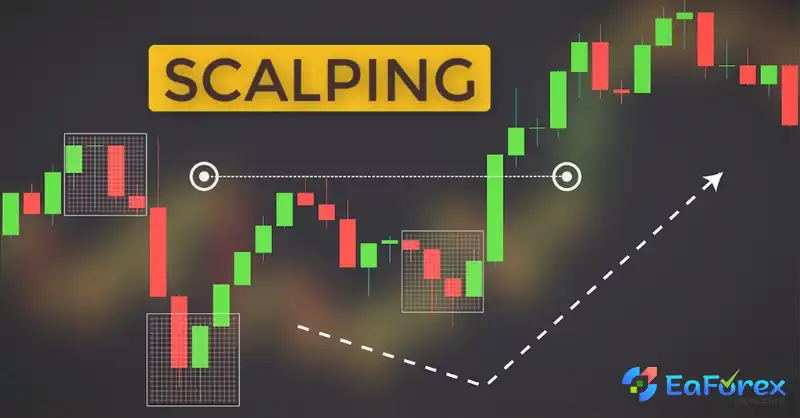What is Forex Scalping trading?

Scalping is a trading strategy that focuses on profiting from small price changes. Traders quickly buy and sell assets to capitalize on these fluctuations. It’s a popular technique in day trading, where the goal is to make high-volume, low-profit trades.
Key Considerations
- Strict Exit Strategy: Scalping requires a well-defined exit strategy to avoid large losses that could negate smaller gains.
- Essential Tools: Success in scalping often relies on tools like live feeds, direct-access brokers, and the ability to execute numerous trades.
- Profit Ratio: Successful scalpers typically have a high ratio of winning trades to losing trades, with profits that are equal to or slightly exceed losses.
- High Trade Frequency: Scalpers often make hundreds of trades per day.
How Scalping Works?
Scalping is based on the idea that many stocks complete an initial price movement but may not continue in the same direction. Scalpers aim to capture small profits during these initial stages, rather than holding positions for larger potential gains.

Key Premises of Scalping
- Limited Exposure: Short-term market exposure reduces the risk of encountering adverse events.
- Smaller Movements: Smaller price changes are easier to achieve due to the balance of supply and demand.
- Frequent Opportunities: Scalpers can benefit from numerous small price movements, even in relatively quiet markets.
Scalping as a Trading Style
Scalping can be used as a primary or supplementary trading strategy.
- Primary Scalping: Pure scalpers often make hundreds of trades per day, using tick or one-minute charts to identify setups in real-time. Direct-access trading and Level 2 quotations are crucial for this style.
- Supplementary Scalping: Traders with longer timeframes can use scalping during choppy markets or narrow ranges. It can also be used to improve cost basis and maximize profits in larger positions.
Scalping Strategies
- Market Making: Scalpers may try to profit from the bid-ask spread by simultaneously placing buy and sell orders. However, this can be challenging due to competition from market makers.
- Buying and Selling: Scalpers can buy a large number of shares and sell them quickly for a small profit, often measured in cents.
- Traditional Approach: Scalpers can use traditional trading techniques, entering and exiting positions based on specific setups and signals.

Tips for Novice Scalpers
- Efficient Order Execution: Avoid delays or errors that can reduce profits or lead to losses.
- Manage Costs: Be mindful of transaction costs associated with frequent trading.
- Understand Market Dynamics: Learn to identify trends and momentum to make informed trading decisions.
- Start with the Long Side: Beginners may find it easier to start with long positions before venturing into short selling.
- Utilize Technical Analysis: Employ technical indicators designed for short-term timeframes to identify trading opportunities.
Pros and Cons of Scalping
1. Advantages:
- Can be highly profitable with a disciplined approach.
- Leverages small price changes.
- Minimal market risk due to short-term positions.
- Non-directional, works in both up and down markets.
- Can be automated.
2. Disadvantages:
- High transaction costs due to frequent trading.
- Requires substantial trade volume to generate significant profits.
- Time-consuming and demanding.
Conclusion
Scalping is a viable trading strategy for those who are disciplined, patient, and willing to focus on small, frequent gains. By understanding the key principles, strategies, and tools involved, traders can explore the potential benefits of scalping in their trading endeavors.


